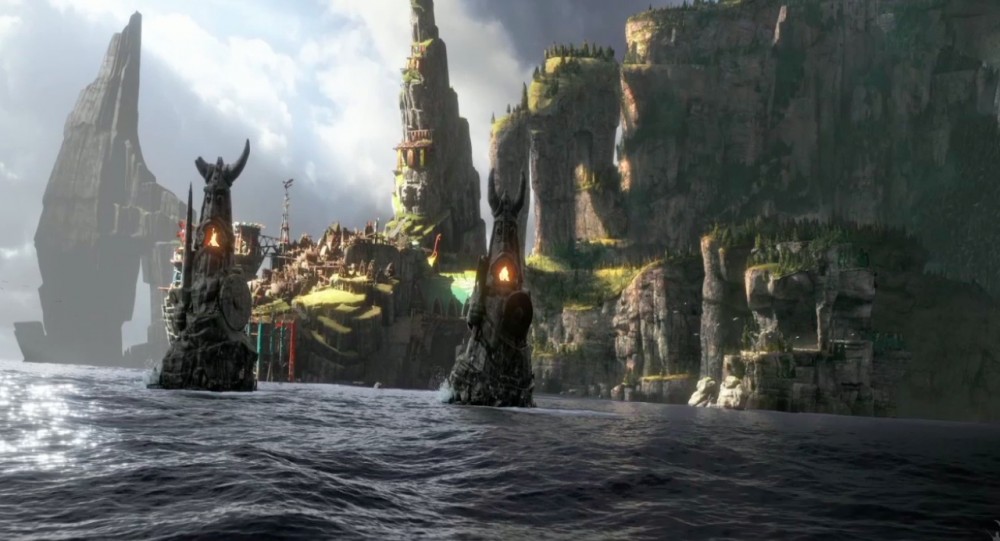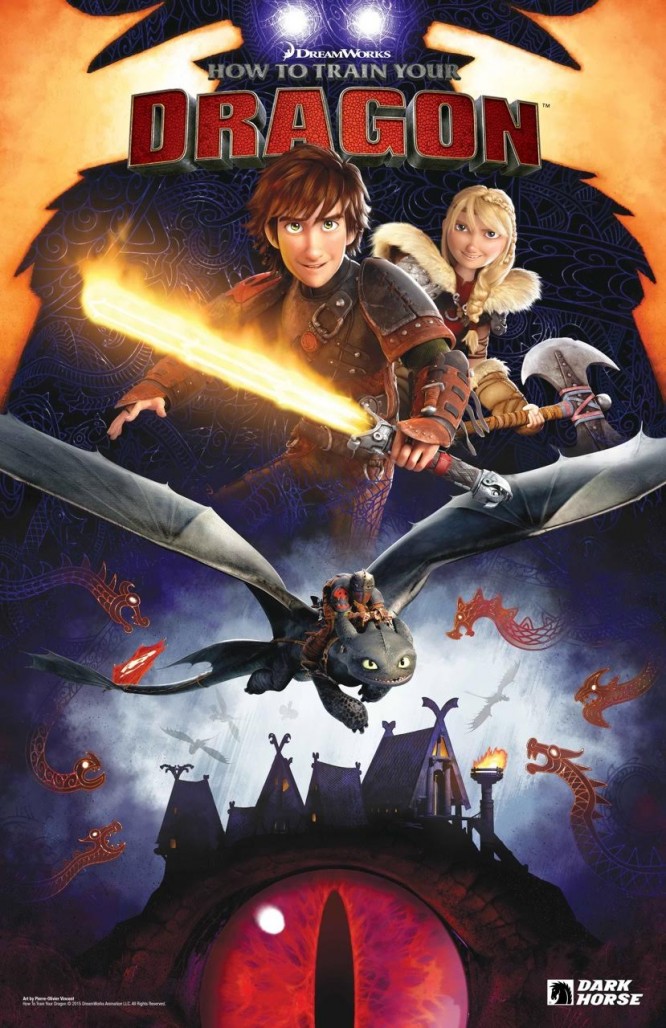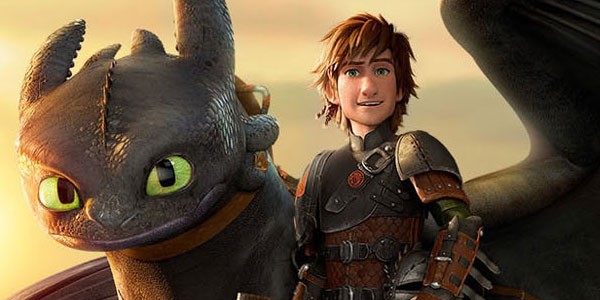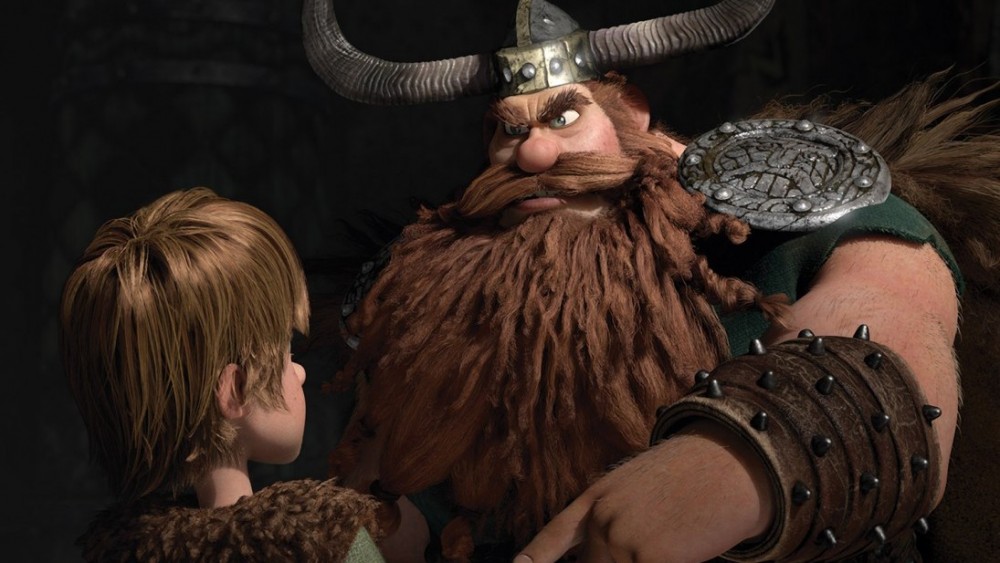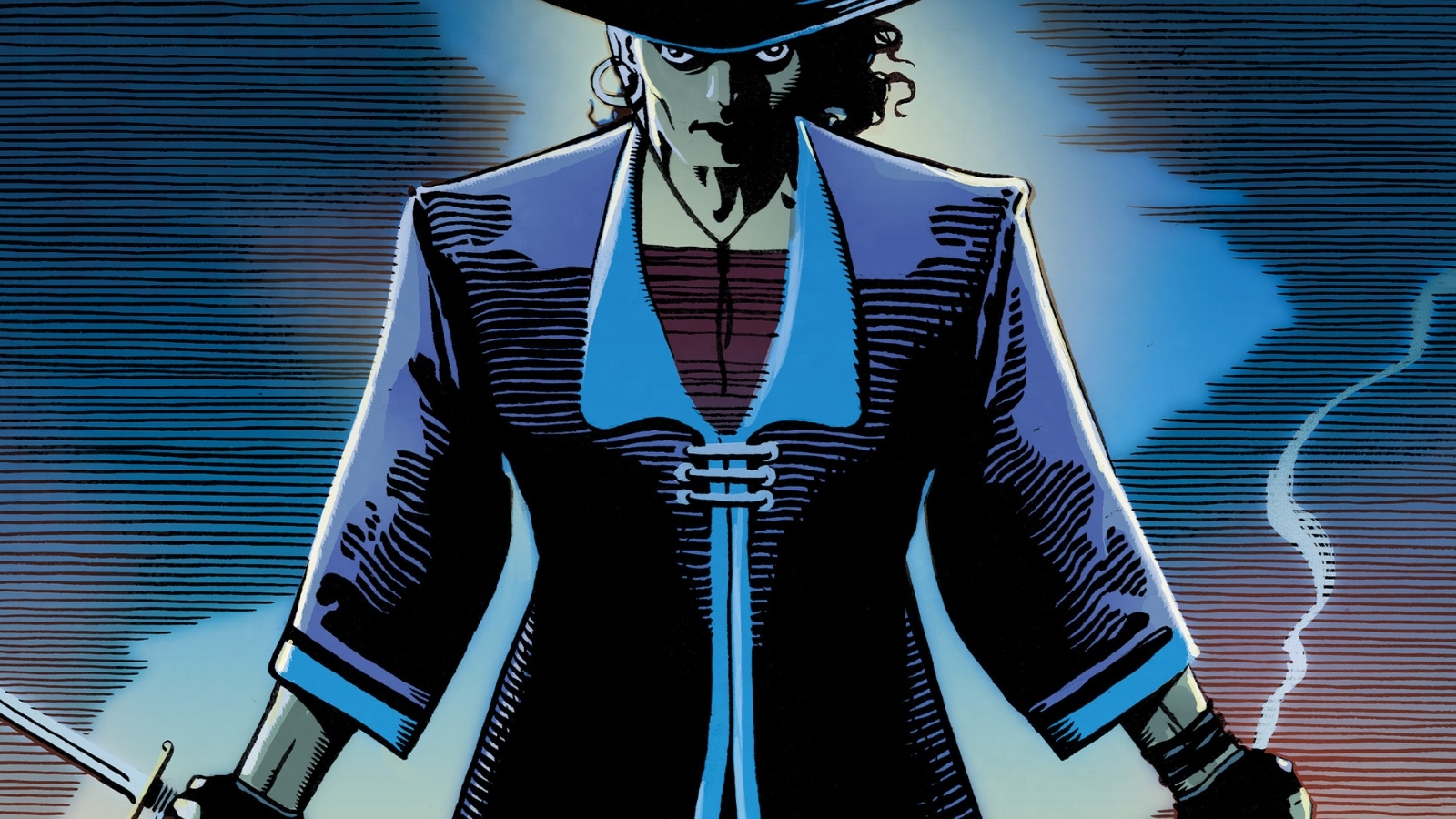The How to Train Your Dragons franchise is one of the biggest critical successes in animation from the last decade. Spawning two movies and three seasons of television, the story of a scrawny viking boy and his toothless dragon have captured hearts and minds through screens around the world. Now, film series director Dean DeBlois and Dreamworks’ Dragons show writer Richard Hamilton are teaming up with Dark Horse Comics to bring How to Train your Dragon to comics through a series of graphic novels. The first, titled The Serpent’s Heir, will be released in 2016.
During New York Comic Con, we got a chance to sit down with Richard and Dean to discuss the new collaboration and learn about how they hope to expand the How to Train Your Dragon universe using the unique strengths of the comics medium.
Alex Lu: How to Train Your Dragon was one of my favorite films of the past few years. It meant a lot to me, especially because it is so beautifully animated. At the “Dark Horse: Classified!” Panel you talked about how expensive it is to animate water. It was definitely worth it!
Dean DeBlois: Thank you, water and clouds [laughs]. Those amorphous forms that have to interact with solid material and people…
Lu: So Dean, how does it feel to be accomplishing your dream of publishing a comic?
DeBlois: Feels amazing! A lot of things are becoming kind of full circle for me. I was such a comics fan when I was a kid and it was my escape. I grew up pretty poor and there was a little smoke shop in a strip mall very close to my house. They knew I was a poor kid so they would let me come in on weekends and read everything on the rack for free. Then I’d commit it all to memory and go home and draw. I owe my story-telling sense, my drawing ability and my general sense of imagination to the many comic books that I was a fan of when I was a kid. To be able to now take something that we have grown with animation like How to Train Your Dragon and then explore and expand it in the world of comic books, especially with a company like Dark Horse…that’s amazing.
Lu: How did you both end up getting involved on the project?
Richard Hamilton: I begged [laughs]. No really, I am a lifelong comics fan. I had the good fortune to work on How to Train Your Dragon 2 with Dean, and when I heard that the studio wanted to do comics sent in the How to Train Your Dragon franchise I thought it was just a perfect fit. I think that, because of Dean’s background in comics and looking at the types of stories we’ve told between the movies, How to Train Your Dragon is sort of a natural fit for comics.
Then, when I heard that Dark Horse was the publishing partner it just really felt perfect. They’ve had such a great track record with licensed books; obviously Star Wars, but even going back to the Aliens and the Terminator comics. It wasn’t just that they were licensing books and retelling the single stories. They were being very additive to the mythos and the world of How to Train Your Dragon with the right level of exploration.
Lu: The story takes place in between the two movies, correct?
Hamilton: The first graphic novel starts the minute after the end of How to Train Your Dragon 2.
DeBlois: Literally a minute.
Lu: I was told that the first three graphic novels would comprise an arc in some way. Do they also stand alone?
Hamilton: There will be at least 3 graphic novels and each one is self-contained, but there are thematic elements shared between them so that if you’re a careful reader or you’re a really diehard How to Train Your Dragon fan, you’ll pick up on them from graphic novel to graphic novel. They will help continue the story from How to Train Your Dragon 2 leading into How to Train Your Dragon 3.
Lu: What is the core story line for these first three stories? In broad strokes, during the panel you mentioned that we would explore Hiccup’s mother’s life after she give birth and abandoned Berk to live among the dragons. What else do you hope to be able to take a look at in the How to Train Your Dragon series?
Hamilton: Hiccup’s mom is part of the plot for sure. It’s, without giving away too many spoilers, taking a good hard look at the fact that Hiccup is now chief and Toothless is now Alpha and what that means for them. What does it mean to be the chief of this very forward thinking, dragon-friendly, utopia and how do you act as chief to vikings and dragons? For Toothless, now that you’re the Alpha and you’re the king of all dragons, what does that mean? What does it mean to rule as a dragon and to lead as a dragon?
We’re seeing how we can play those questions out across the graphic novels. That, for me, is the real fun part. That’s where a lot of the stories are springing from. As Dean alluded to earlier, you know, there are some budgetary considerations with doing the movies, but that’s not really the case with the comics and so we’re free to really play. We’ve got a really cool underwater adventure planned for the graphic novels which we never really seen in the movies so far. Hiccup and Toothless and the rest of the dragon riders are gonna set off on a really cool adventure on the high seas and under them.
Lu: One of my – one of the most striking parts of the movies was the quality of the sound. The voice cast is a large part of what makes the film so iconic, and is probably the biggest thing you lose access to when transitioning into comics. How do you think this will affect the development of the series?
DeBlois: If you’re familiar with the characters of the films, you know that Jay [Baruchel] has that nasal quality that juxtaposes against Gerard Butler’s Scottish brogue. Thus, I think that, if you write in the voice of the characters, your imagination fills it in. You should never be able to read a script and not identify the characters based on their dialogue. Everyone should speak in a certain way, with a certain cadence, and use certain language that would identify them without the actor having to come in to do their thing. Hopefully you can channel the character through their use of vocabulary.
Hamilton: The art helps a lot with that, too. The lettering is really crucial as it adds a lot of inflection to the dialogue through bolded and italicized words.
Lu: Dean, having worked in animation so long after having worked in comics for a little while what are the lessons you hope to take from animation and bring back into the comics world?
DeBlois: Well, I think there are a lot of compromises that we have to make in animation because frankly, animation is expensive. There are a lot of ideas that have to be rethought, contained, and presented in a less ambitious way simply because we don’t have the budget to do them in the way that we imagined.
Comics are pure because, you know, you lay it down and you draw, you design, you compose it with complete disregard for what it would actually cost to produce in live action or animation. In that way, I think it’s very freeing. You know the amount of awe and wonder that we can put into the pages book is…it carries me right back to the beginning of my career, when I was fascinated with comic books and wanted to be a comic book artist. It’s boundless limitation.
Lu: So it’s time for the dragons to really soar then, huh?
DeBlois: Absolutely.
The first Dark Horse graphic novel, How to Train Your Dragon: The Serpent’s Heir, will hit shelves in 2016!
How to Train your Dragon 2 and Dreamworks Dragons: Race to the Edge, are bingeable on Netflix now.



